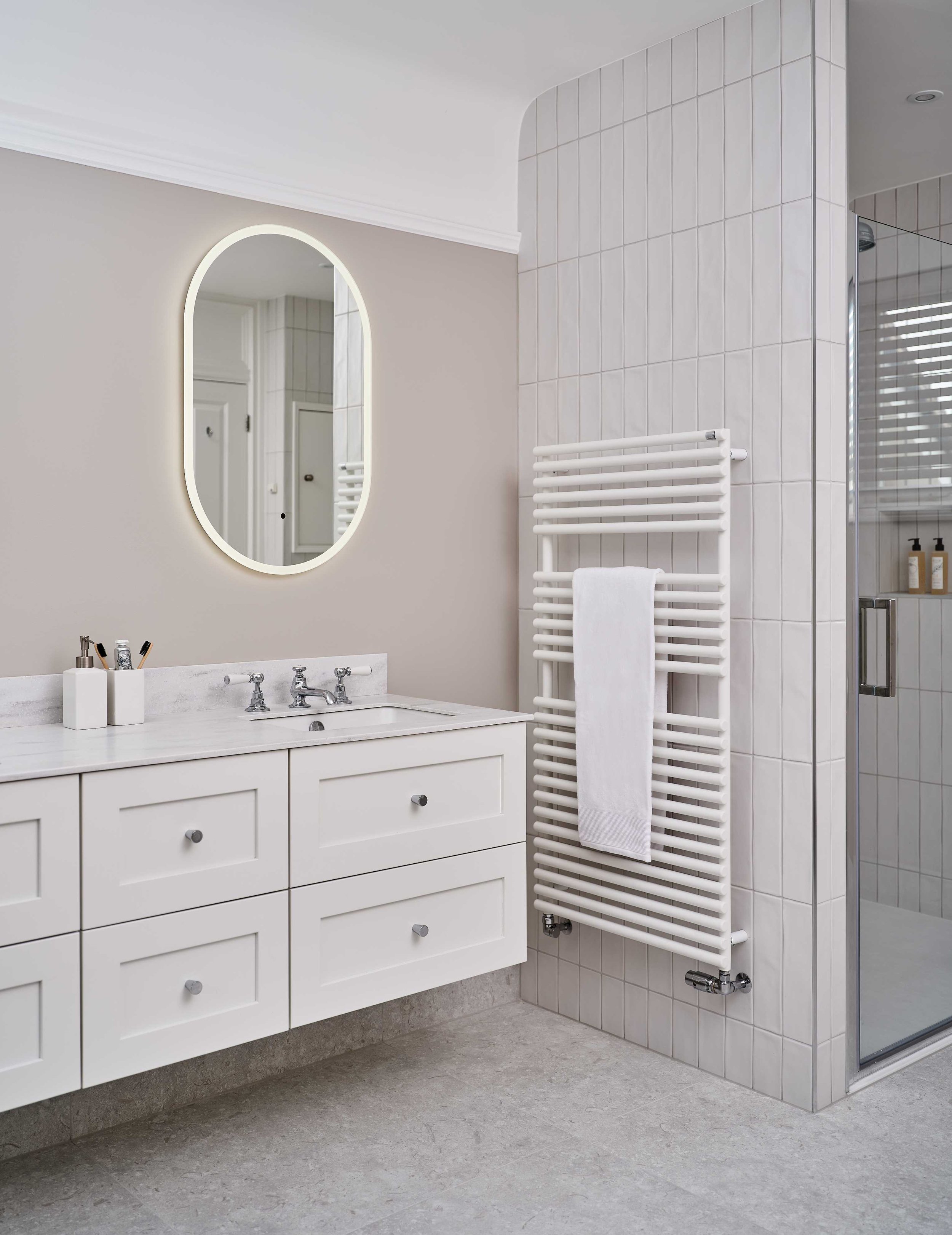Designer advice: How to heat your bathroom
Heating your bathroom is different to heating any other room in your home. The unique combination of high humidity and moisture can make it difficult to keep your bathroom at the right temperature and even harder to keep mould at bay. So what’s the best way to heat your bathroom? Here, Senior Designer Dena Kirby from Ripples Harpenden gives her thoughts.
Underfloor heating
If you’re starting from scratch with your bathroom design, I would always recommend incorporating underfloor heating within your plans. Alongside a tiled bathroom floor, underfloor heating gives an ambient warmth, whatever the season.
If you have a floor-tiled shower tray, underfloor heating can be incorporated underneath, helping to dry up water and keeping you warm underfoot whilst showering. Underfloor heating can even be taken up walls and onto tiled seats for an indulgent, spa-like experience which in turns heats the bathroom even faster. Underfloor heating also has the added bonus of being a great selling point for your property as it’s a feature that cannot be retrofitted and is often quite sought-after.
“No matter which heating option you choose, you’ll need to make sure it complies with IP safety ratings, especially if it’s within your bathroom’s splash zones.”
Towel rails
Towel rails are a great option because they’re dual purpose; they heat both your towels and the room. They’re a good option for smaller bathrooms, en-suites and cloakrooms as they’re wall-mounted and therefore don’t use us up valuable floor space. Due to their sleek profile, they can be positioned on walls which would otherwise be left unused and don’t impose too much on your bathroom’s overall design aesthetic. If you have a larger room and would like to incorporate a towel rail, I would recommend opting for a style with larger bars as they’ll heat the room more effectively and will also warm your towels more evenly. You may wish to incorporate another mode of heating in addition to a towel rail if you have a particularly large room and like to keep things toasty.
Heated towel rails are also an energy efficient option as you can switch them on to heat the bathroom without having to heat the rest of the home through central heating.
“The best way to retain heat in your bathroom is to ensure it’s well insulated. Insulation (cavity wall and roof) and double glazing are the most effective ways to make sure the heat your produce remains within the room.”
Radiators
Radiators are perhaps the most common type of bathroom heating and, whether you opt for a traditional column or more contemporary panel option, are still one of the most effective ways to heat your space. There are many style and colour options available on the market these days so you can find something that adds to your bathroom’s overall look, rather than detracts from it. You can even choose a radiator which perfectly matches your special finish brassware, whether it’s matt black or polished gold. Whichever style you choose, I would always recommend opting for dual fuel heating as this can dramatically reduce energy usage in your home.
For more bathroom advice from our team of specialist bathroom designers, download or request a copy of our free Style Guide.
Here, we ask Faye, Senior Designer at Ripples Bournemouth to give her advice on the key areas tech can be incorporated within bathroom design.







